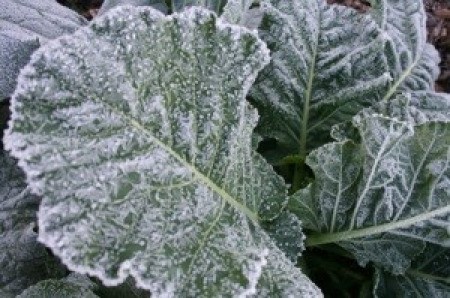For gardeners in most zones, the end of the growing season is signaled by the onset of the first frost. No matter when it arrives, it always seems painfully early. To avoid damage to your plants, it helps to understand the conditions under which it forms, how it affects different plants, and what actions you need to take when the first frost is in the forecast.
Species, age, overall health, and location are all factors that affect frost damage. The primary factor, however, is the internal temperature within the plant's tissues. When internal temperatures become too cold, fluids within the plant's cells freeze and rupture, damaging surrounding tissues. Cool weather before frost (like falling afternoon temperatures) is more likely to result in damage, because the plant's internal tissues are already lower to begin with.
Frost occurs when air temperatures fall below 32F To form, conditions have to be just right.
If frost is predicted, you can protect your plants in a number of ways.
Click here to find the average first frost date in your area: http://www.farmersalmanac.com/home_garden/a/average_frost_dates

About The Author: Ellen Brown is an environmental writer and photographer and the owner of Sustainable Media, an environmental media company that specializes in helping businesses and organizations promote eco-friendly products and services. Contact her on the web at http://www.sustainable-media.com
Add your voice! Click below to comment. ThriftyFun is powered by your wisdom!
To extend my harvest I have bottles of water all over my garden, gallon milk jugs, 2 liter soda bottles, etc. As the sun comes out each day it warms the water in the bottles and lets it out at night while it's cold, so far so good!
Even my okra is continuing to produce in the cold Oregon fall, now if only the deer would let me keep some leaves on it I'd be set! Cold usually settles to the lowest point & I think it helps that my garden is raised 2 feet off the ground as well.
I still have plants to get into the ground and they are calling for near frost this weekend. Help!
I live in gardening area 5b according to various maps. I live in a deep valley, so I prepare as if I am in a much colder area. Local tv gives a cold nighttime temp I subtract 8-10 degrees from that. For m6 garden!
Add your voice! Click below to comment. ThriftyFun is powered by your wisdom!
To protect plants from frost, cover rows with fitted twin sheets. Plan early when planting with this in mind.